The Skyscraper Museum is devoted to the study of high-rise building, past, present, and future. The Museum explores tall buildings as objects of design, products of technology, sites of construction, investments in real estate, and places of work and residence. This site will look better in a browser that supports web standards, but it is accessible to any browser or Internet device.
Installing Terra Cotta
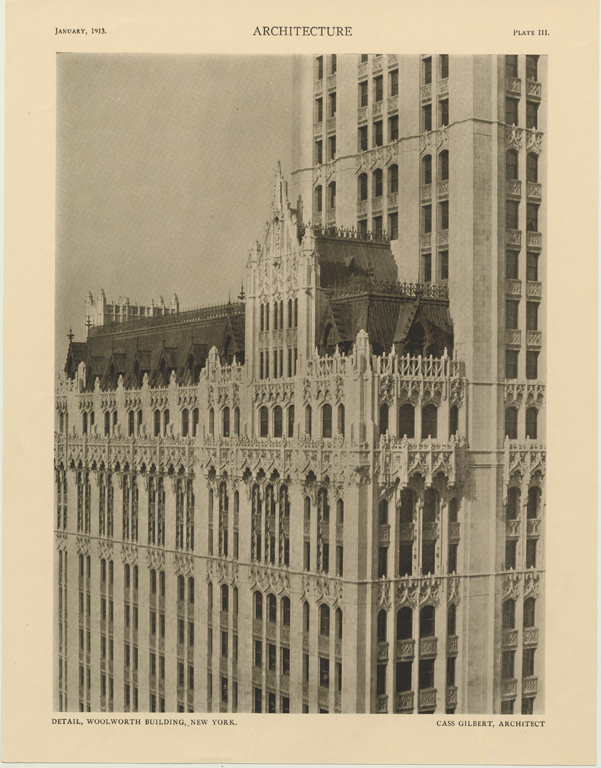
Details of terra cotta ornament, American Architect, January 1913. Collection of The Skyscraper Museum, Gift of Andrew Alpern.
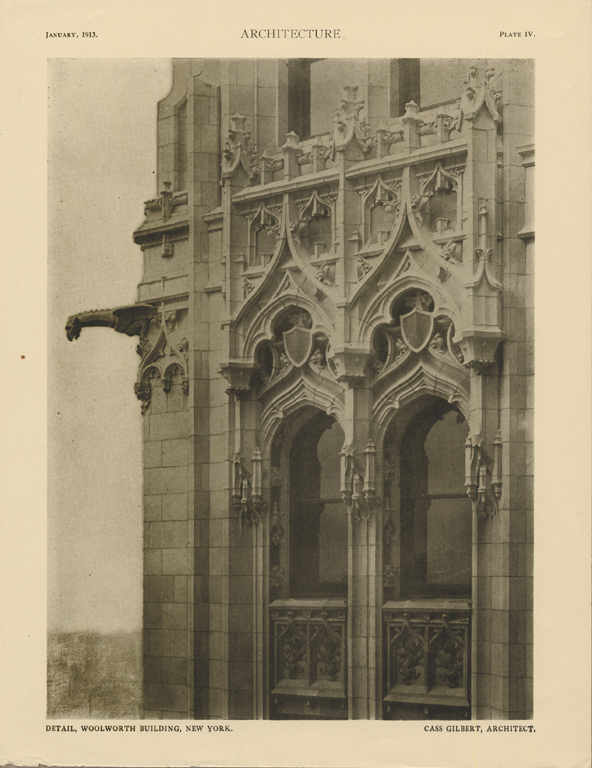
Details of terra cotta ornament, American Architect, January 1913. Collection of The Skyscraper Museum, Gift of Andrew Alpern.
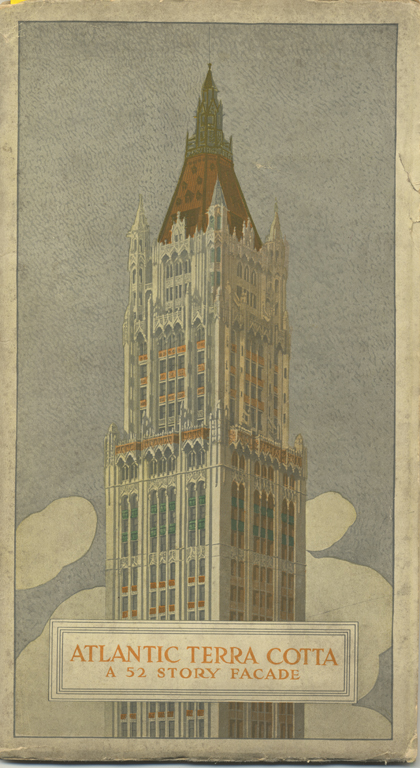
Booklet Cover,
Atlantic Terra Cotta Company, "A 52 Story Façade," 1913
Collection of The Skyscraper Museum
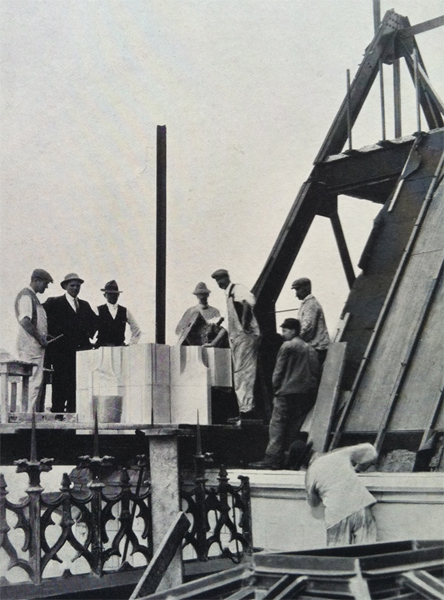
Construction photographs,
Atlantic Terra Cotta Company, "A 52 Story Façade," 1913
Collection of The Skyscraper Museum
The images above and below depict Atlantic Terra Cotta workers during the construction. The installation of the terra cotta cladding began on February 1, 1912, when 18 stories of the building's steel skeleton had been completed. Following detailed plans, workers on scaffolds connected the terra cotta units to the frame. As terra cotta was attached-at a pace of about one and a half stories per week-the next factory shipment was on its way.
Workers are photographed on the gable of the main building in the top right image and underneath a buttress at the 47th story in the bottom center image. William Kraemer, project manager for Atlantic Terra Cotta, stands on the 42nd story in the bottom right photograph.
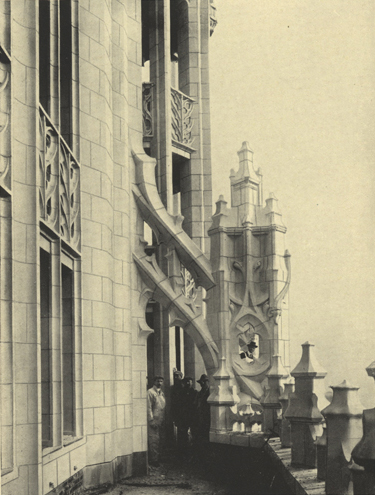 Construction photographs,
Atlantic Terra Cotta Company, "A 52 Story Façade," 1913
Collection of The Skyscraper Museum
Construction photographs,
Atlantic Terra Cotta Company, "A 52 Story Façade," 1913
Collection of The Skyscraper Museum
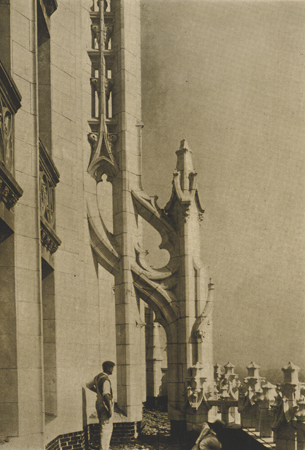 Construction photographs,
Atlantic Terra Cotta Company, "A 52 Story Façade," 1913
Collection of The Skyscraper Museum
Construction photographs,
Atlantic Terra Cotta Company, "A 52 Story Façade," 1913
Collection of The Skyscraper Museum
Terra Cotta: Then and Now
The historic and contemporary photographs in this video reveal the great variety of terra cotta ornament designed for the Woolworth Building and how the material has endured over the past century.
Terra cotta made possible the mass-production of ornament for the nearly 400,000 similar units of cladding and for the decorative spandrels, the panels under the windows. The architects created eight spandrel motifs that repeated in different combinations across the facade.
